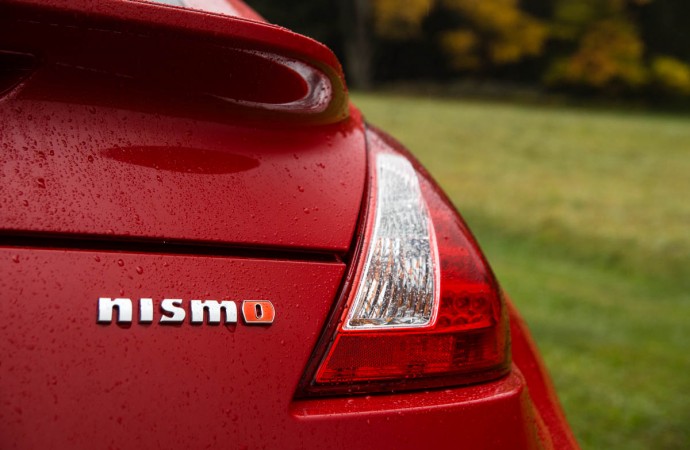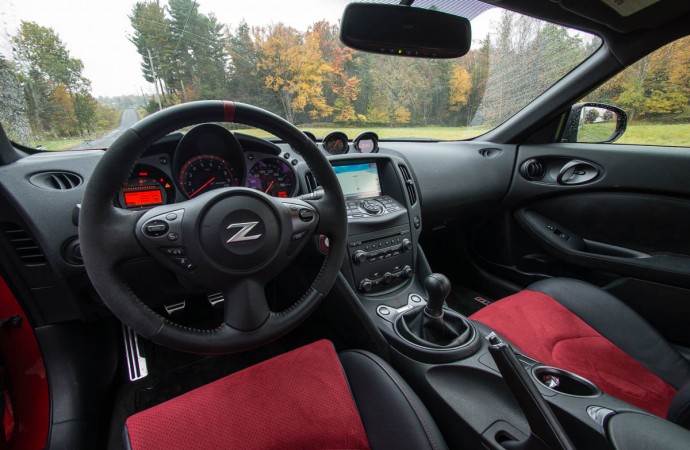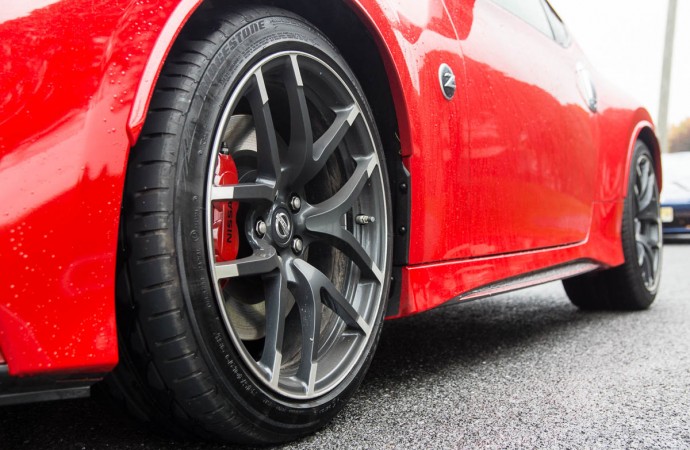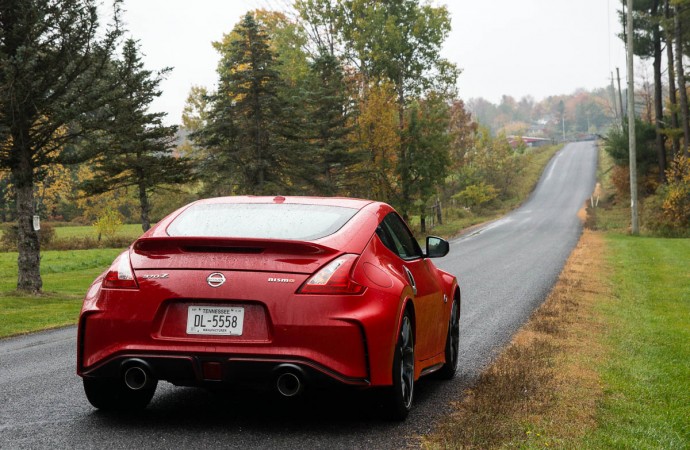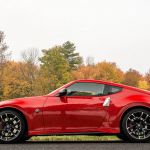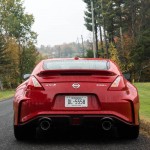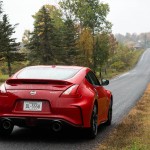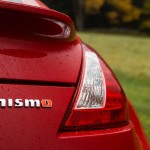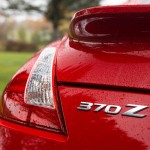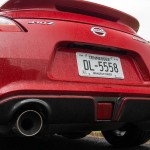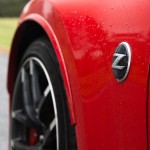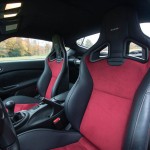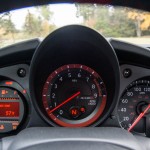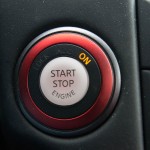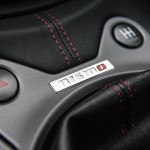The Nissan 370Z occupies a somewhat strange section of the market. It has soldiered on since 2008 relatively unchanged, save for a handful of special editions. I’ve always respected the 370Z for all of its legitimate go-fast credentials: a big V6 up front powering the rear wheels, manual transmission, good weight distribution, and robust suspension geometry. What kept it out of mind for a lot of people was its price – it was considered by many to be just a little too high, compared to the newer competition it faced. The 370Z recently came back onto the radar because of the new base “Enthusiast” edition, bringing the price way down to a much more palatable $29,998.
We’ve spent some time with the new base 370Z and have come to like it quite a bit. It’s a little more money than a Scion FR-S or Subaru BRZ, and within a thousand dollars of the Hyundai Genesis Coupe. Out of the box, all the fundamentals are there, but some modifications may need to be considered if you’re looking to hit up the track in a serious way. This is where the 2016 Nissan 370Z Nismo comes in. It comes with a multitude of serious upgrades, some of which you can see, and some you can’t. As part of a media conference, I got to check out a “Magma Red” 370Z Nismo on the track for some quick impressions, as well as some on-road evaluation.
The 370Z Nismo, on the outside, swaps out the front bumper with a more aggressive, and Nismo-branded piece, designed to deliver more downforce and cooling to the various thermal management systems. The two-toned side skirts look great while doing more of the same. The rear bumper is flared to accommodate a more aggressive diffuser and exhaust, and the cleanly-integrated rear-spoiler finishes everything off. It’s still a good-looking car, even after all these years.
The 370Z Nismo also rides on unique 19-inch forged wheels supplied by RAYS – the rear wheels themselves are 10.5-inches wide and hold a 285-section rear tire. Inside those gorgeous wheels reside a set of larger multi-piston brakes (with upgraded brake hoses and GTR-specific fluid), and unique Nismo-specific springs, fixed dampers, and larger stabilizer bars. There’s also some additional chassis bracing, by way of a 3-point strut tower brace and additional under-body bracing. When you’re looking for serious track performance, these are the items you’d look to upgrading first.
Inside, the 370Z Nismo really does make you feel you’re in the top-end model of the series. The seats, first and foremost, are a unique affair. They’re manually adjustable, and not heated (power seat motors and heaters add quite a bit of weight). The knob to adjust the seatback angle is in a tight spot, and as a result, they’re a little bit of a pain to get set up the way you want it. Once you do, the aggressive bolstering and Alcantara do a good job holding you in place. There’s a special Nismo-specific Alcantara steering wheel, which is very grippy, and features a red marker at the 12-o’clock position so you can get your bearings a little more easily. Being at the top of the 370Z lineup, satellite navigation is included, as are a smattering of Nismo badges. It’s a serious (but somewhat dated) interior for a serious car.
Under the hood, the 370Z Nismo uses the workhorse Nissan 3.7L VQ engine, but Nissan has upgraded it with a performance exhaust system (with an H-crossover in the middle), good for improving both the flow and the sound produced. This high-compression and high-revving gasoline V6 is good for 350hp @ 7400rpm and 276lb-ft of torque @ 5200rpm. In Canada, the 370Z Nismo is available only with a six-speed manual transmission. This is in contrast to the American 370Z, which can be had with a seven-speed automatic transmission, borrowed from the Infiniti Q50. Power is sent to the rear wheels by way of a viscous limited-slip differential.
Behind the wheel, it’s easy to pick up the 370Z Nismo’s serious feel. You sit low in the seat, and low to the ground. Visibility is an issue all around you, with tiny quarter windows that are more-or-less there for decoration. The exhaust emits a deep rumble and does a good job accentuating the familiar VQ V6 sound that we’ve become very familiar with over the years. Once you really get moving, the steering tightens up, and the interface that is the clutch and pedal assembly come together in a very intuitive way. Going fast, even at the track, is easy in this car. You have confidence in the big brakes, and seemingly endless grip from the wide tires all around.
Nissan includes their SynchroRev Match system in this car, which automatically blips the throttle when downshifting so not only is there one less thing you have to worry about, you can sound like a superstar when coming back down through the gears. Thankfully, you can turn all this off – nailing a rev-matched downshift yourself in the 370Z Nismo produces some wonderful music.
On the street, the ride proves to be very firm, with stiff spring rates and aggressive fixed damping. Some may find it a little too stiff for daily duty, and I’d be inclined to agree. The overall size of the 370Z is easy to deal with on the street, but the poor visibility to the sides and rear mean leaving lots of room on both sides so you can stay away from the curb you can’t actually see. Thankfully, the turning circle is relatively tight, even with these wide wheels and tires, thanks to the short wheelbase. Nissan Canada rates the 370Z Nismo at 13.3L/100km in the city, and 9.3L/100km on the highway, and it will accept a generous 72L of fuel.
As relevant as the new base Nissan 370Z is (at $29,998), it’s a little harder to swallow the difference between the bottom and the top of the range. The 370Z Nismo starts at $47,998, and while there aren’t any options available (at least in Canada), some may wonder where the nearly $20,000 goes. For starters, there’s the upgraded Nismo bodywork, wheels, and tires. The rest of it goes into the development for the modifications you can’t see, such as the suspension, exhaust, and engine tuning, and of course, the warranty.
It’s a good package for somebody who’s looking for something fun and prepared out of the box, but if it were up to me, I’d be more tempted to pick up the base 370Z, and modify it with my own hardware. This allows you to personalize the car to your own tastes, but going this route comes with the risk of voiding one’s warranty and basically negating all the polished research and development that goes into the 370Z Nismo edition.
Cars like the base 370Z have many peers, like the Hyundai Genesis Coupe and Subaru BRZ (in a stretch), but the price of the 370Z Nismo puts it right in the crosshairs of some seriously excellent sports cars. One such example is the Ford Mustang GT, but specifically with the Performance Package. It features a lot of the track-focused upgrades that the 370Z Nismo gets, like the wider wheels and tires, larger Brembo brakes, additional bracing and cooling, and upgraded software, among other things. What really sets it apart is the big 5.0L V8, giving the Mustang GT a significant power advantage. The incoming 2016 Camaro should be an excellent competitor in the same range, complete with the lack of outward visibility. We can’t wait to get our hands on it.
At the end of the day, I still believe the 370Z Nismo occupies a strange price range, considering the overall value for money. I find it to be especially appealing when you look at it in a vacuum, if you will. All the hardware upgrades are attractive, and the overall package is very well polished, but this is a car that needs more than just another option package to be relevant again. Regardless of how you feel about it, the 370Z Nismo is a car that I was able to get into, quickly become comfortable with its capabilities, and drive fast on the track. That’s definitely worth something.
2016 Nissan 370Z Nismo Gallery

